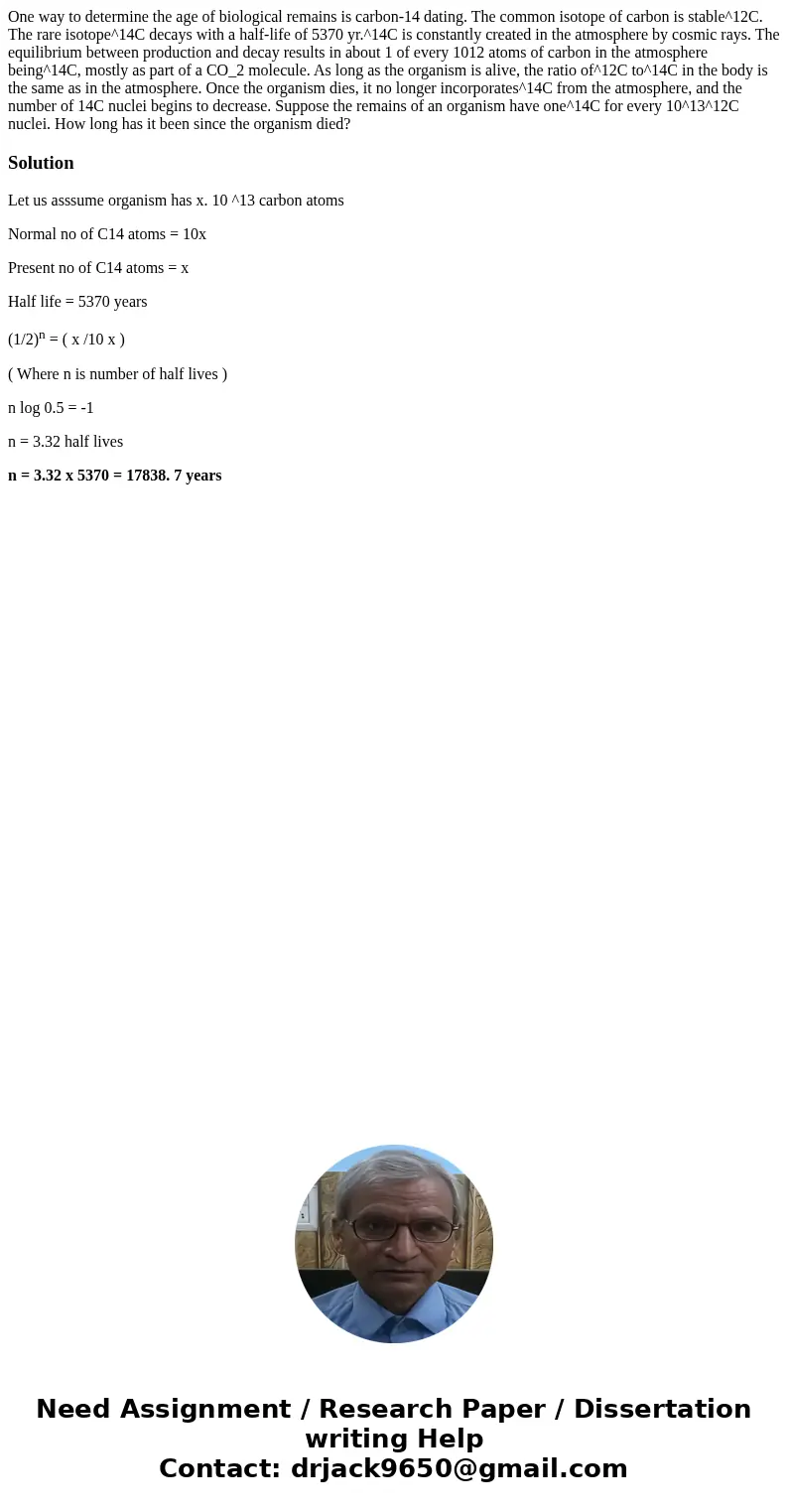One way to determine the age of biological remains is carbon
One way to determine the age of biological remains is carbon-14 dating. The common isotope of carbon is stable^12C. The rare isotope^14C decays with a half-life of 5370 yr.^14C is constantly created in the atmosphere by cosmic rays. The equilibrium between production and decay results in about 1 of every 1012 atoms of carbon in the atmosphere being^14C, mostly as part of a CO_2 molecule. As long as the organism is alive, the ratio of^12C to^14C in the body is the same as in the atmosphere. Once the organism dies, it no longer incorporates^14C from the atmosphere, and the number of 14C nuclei begins to decrease. Suppose the remains of an organism have one^14C for every 10^13^12C nuclei. How long has it been since the organism died?
Solution
Let us asssume organism has x. 10 ^13 carbon atoms
Normal no of C14 atoms = 10x
Present no of C14 atoms = x
Half life = 5370 years
(1/2)n = ( x /10 x )
( Where n is number of half lives )
n log 0.5 = -1
n = 3.32 half lives
n = 3.32 x 5370 = 17838. 7 years

 Homework Sourse
Homework Sourse